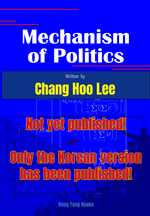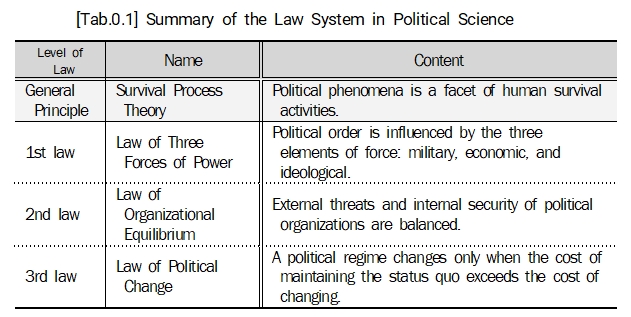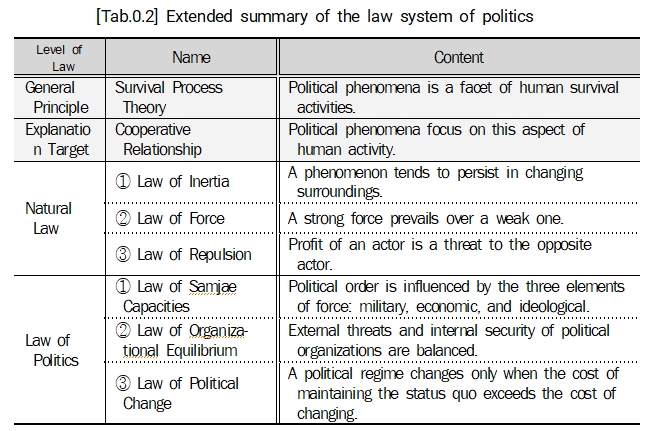Chapter
0. Contents of this book

A. 3·1 Law System and
its Contents
In this book, my aim is to explain how
the massive machine of politics operates. Politics is
comprised of the interactions of many individuals, including
myself and yourselves, and it may give the illusion
that it operates differently based on our whims. However,
in my view, that is not actually the case.
If our goal is to understand rationally
and scientifically the causes that lead to what we refer
to as "political results," such as the French
Revolution, the American Civil War, or the collapse
of dynasties, then, in those cases, the individual is
simply a component of the massive political machine.
The operation of this machine is dominated by general
laws that repeat in political phenomena in both the
East and West, rather than the decisions or actions
of individual actors.
Therefore, what I am trying to explain
in this book is the factual operating principles of
the cause-and-effect relationship in politics (or political
phenomena), as "Political Phenomenology".
That is, I will consider politics as one complex and
large machine like a car, and explain it. The scope
and limitations of my explanation will be clearly determined
here.
Comparing politics to a car does not
mean that I am explaining what the car of politics should
be made for or who should drive it. For example, explaining
what a desirable political system is, or what needs
to be done to realize genuine democracy and peace, is
not the task of this book. I think that these kinds
of claims belong to political ethics, philosophy, or
political ideologies. I am not going to talk about such
ethics or philosophy in this book. I will simply explain
that the car of politics is powered by an engine, and
the engine requires energy, and the operating principles
of the car engine are determined by natural science
laws like physics laws, in a certain way.
To be direct and remove the metaphor,
I will not explain what is desirable or right and wrong
in politics in this book. I will only explain how the
various political phenomena are carried out according
to certain laws. In other words, it can be summarized
as follows.
| |
[Ch.0.1] In this
book I will explain ‘only the causation
and the general laws of political phenomenon’ |
What are the general principles then?
If the idea is well organized, it can be succinctly
explained. That is what I aim to do in this book. Most
of the political phenomena can be explained based on
one general principle and three laws that are based
on it.
I will refer to this as the "3.1
Law System( of Political Phenomena)". When the
3.1 Law System of Political Phenomena is organized in
a table, it is as follows.

[Table 0.1] summarizes the most important
parts of the contents in this book. If you want to organize
the entire contents in this book in more detail, you
can expand it to the following table.

The laws presented in this table are
ordered by generality and influence. In other words,
if the law of Samjae Capacities and the law of inertia
clash, the law of inertia has a stronger effect on the
phenomenon. Survival theory takes precedence over all
principles, followed by natural laws. Political laws
explain specific phenomena not explained by this system
of laws.

[Drawing 0.A] System
of 3·1 laws and structure of its contents
The 3.1 law system mentioned above can
explain almost all political phenomena systematically
(uniformly and universally). The scope of the explanation
includes all political phenomena of East and West, past
and present. That is, explaining all political phenomena
of the East and West, past and present, by repeatedly
applying this 3.1 law system. Also, macro-level political
phenomena that occur over a long period in large continents,
as well as micro-level political phenomena that occur
between some people over a short period, can all be
consistently explained by the 3.1 law system, which
is relatively simpler than any existing political science
law. This is similar to Newton's law of universal gravitation,
which consistently explains the motion of all objects.
Before explaining the detailed content
of the 3.1 law system, let's first clarify the scope
of the political phenomena that these laws aim to explain.
  
|